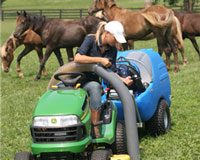It’s no secret that prices are going up, up, up! Understandably, equestrians are watching every dollar so they can continue taking great care of their horses amid inflation.
Below are our top gizmos that will save you big over the long run.
15 Equestrian Hacks Amid Inflation
1. Cushion From the Cold
Make winter watering easier with insulated buckets and tanks. While tank and bucket heaters are nice, a single tank heater can increase your electricity bill by $30 a month!
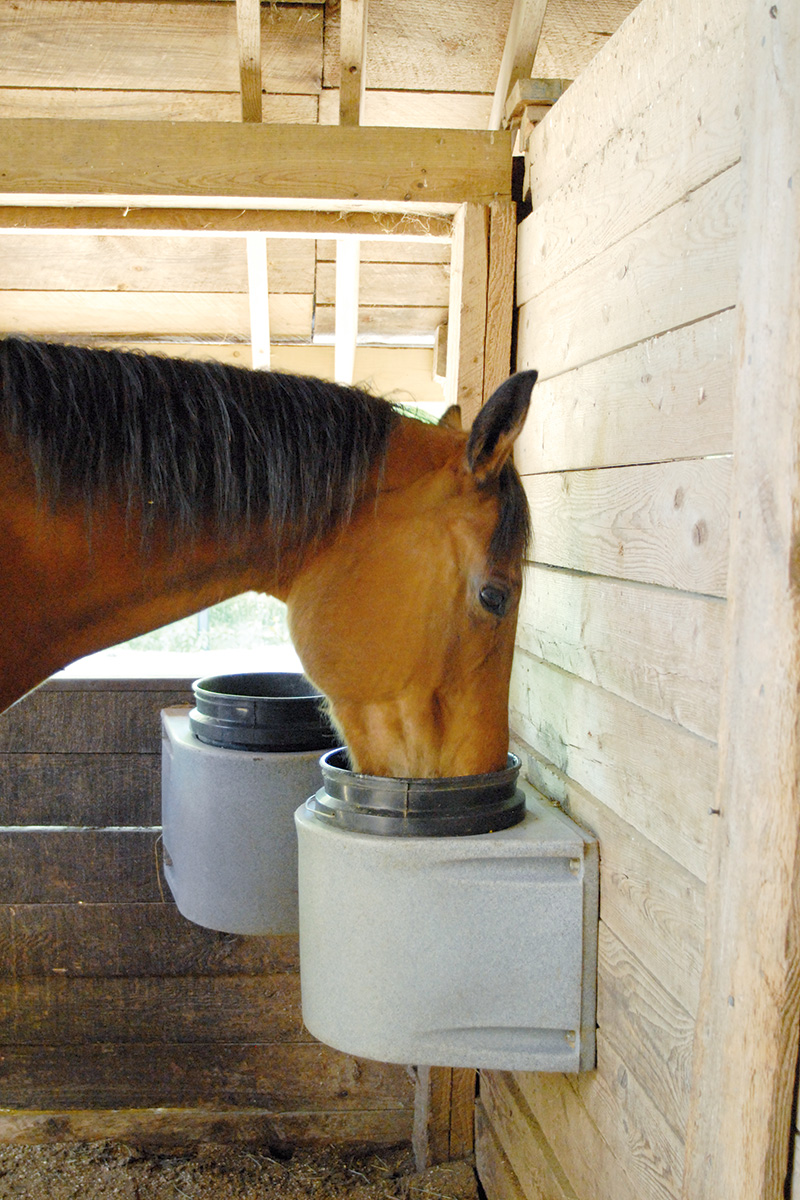
For those of us living in northern states, insulated bucket holders, either purchased or homemade, make barn life easier. A little bit of insulation means no more swinging a rubber mallet at the side of the bucket to break up the ice every day.
Large, outdoor tanks can be set inside a heavily insulated box with a piece of floating hard insulation on the water surface. My 100-gallon tank in Maine stays amazingly ice-free most days in the winter. There are no extra electricity expenses (perfect for dealing with inflation!) and no extension cords crisscrossing the farm.
2. Magnetic Tool Strip
A hammer, leather punch, screwdriver, or knife: How many times do you find yourself needing to quickly grab a tool but end up digging around for long stretches to find one? You may have even given up and thrown money away on a replacement simply because you couldn’t find it when you needed it.
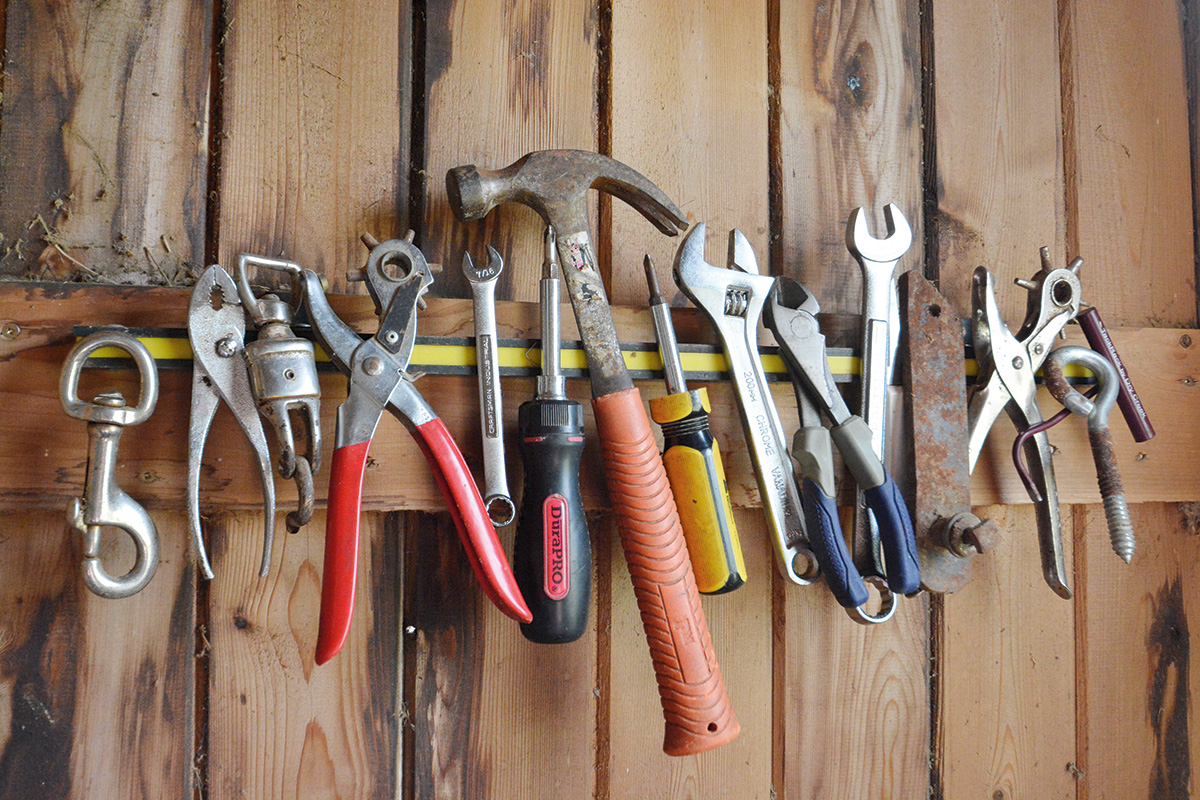
For less than $25, you can purchase a three-pack of heavy-duty magnetic strips. Designed to hold heavy metal objects, they can be mounted on the walls in the tack room or feed room to keep the tools you use most at hand.
3. Invest and Save
My best tool investment was a portable air compressor; small ones start at $100. Air compressors are worth their weight in gold, especially if you add up all the tires at your farm. Tallying up my truck, horse trailer, hay trailer, lawn mower, tractor, utility trailer and wheelbarrows, I have 26 tires on the farm, and at least one of them always needs air.
4. Cord Control
Keep your barn aisle neat with a wall-mounted extension cord reel. These cord reels keep power at the ready, yet neatly put away when not in use. This way, you don’t need to go looking through the tack room for the last place you saw an extension cord or deal with tangled, twisted cords, and you won’t have dangerous tripping hazards in the barn aisle.
5. Collect Rainwater
Here in the U.S., we have some regions that are desperate for rain, while others are wishing it would stop. Whatever the situation, we rarely take advantage of harnessing this natural resource.
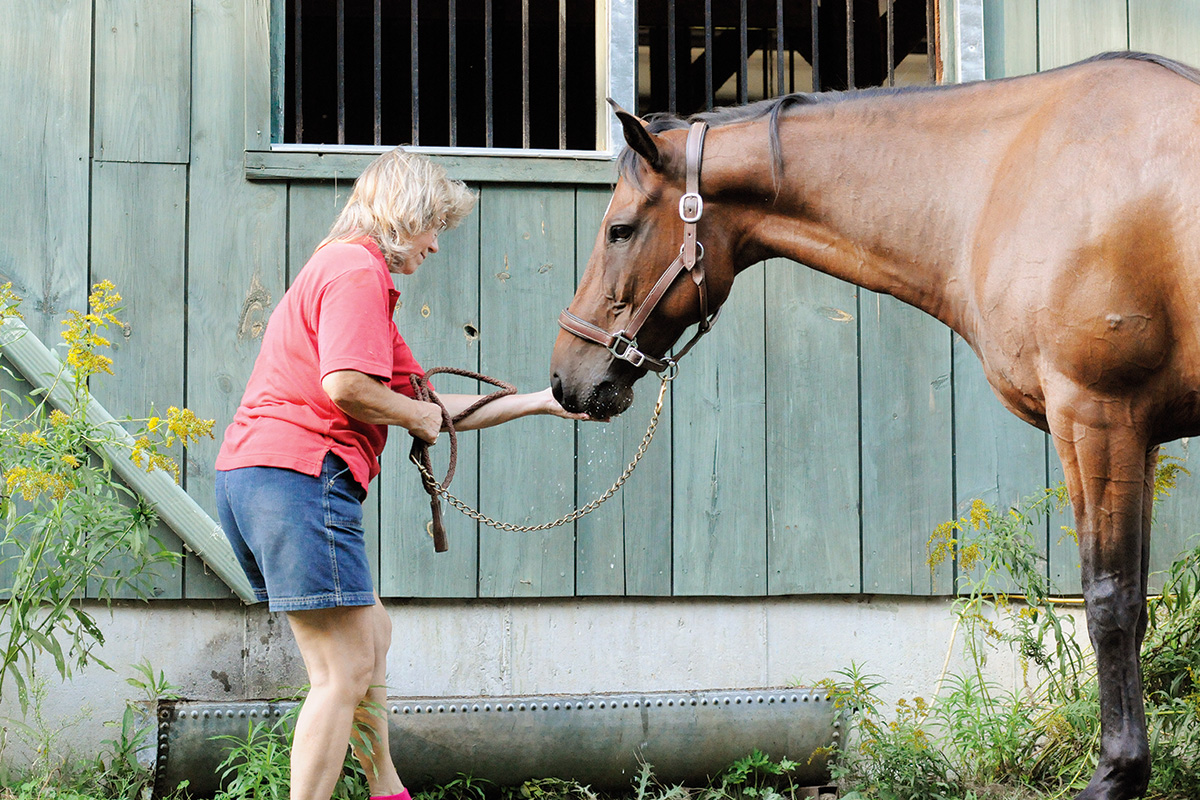
Rainwater can easily fill your troughs, and you don’t need a fancy system. If you have buildings with metal roofs, just add a gutter and downspout directed to the water tank.
Numerous websites can help you calculate how much water can be collected based on the size of your roof and the amount of rainfall you receive. For example, my small run-in shed has a 24-square-foot by 16-square-foot roof. That’s 55,296 square inches. Multiply this by a 1-inch rainfall, and I can collect 55,296 cubic inches of water. Divide that by 231 (the number of cubic inches in a gallon), and the result is 239 gallons of water—not bad for a small run-in shed! This is actually more water than my trough can hold.
If you have horses in remote pastures with run-in sheds, you can add a storage tank to collect the water and a float valve to let it automatically fill the tank when the level drops.
Think about the time you save not having to lug water or drag out hoses as often, not to mention savings on your water bill. You can find plans online for building a simple rain barrel or a more complicated rainwater-catchment system.
6. In Hot Water
For less than $250, you can have hot water on demand in a system that is so portable, you can even take it to shows or to trail rides.
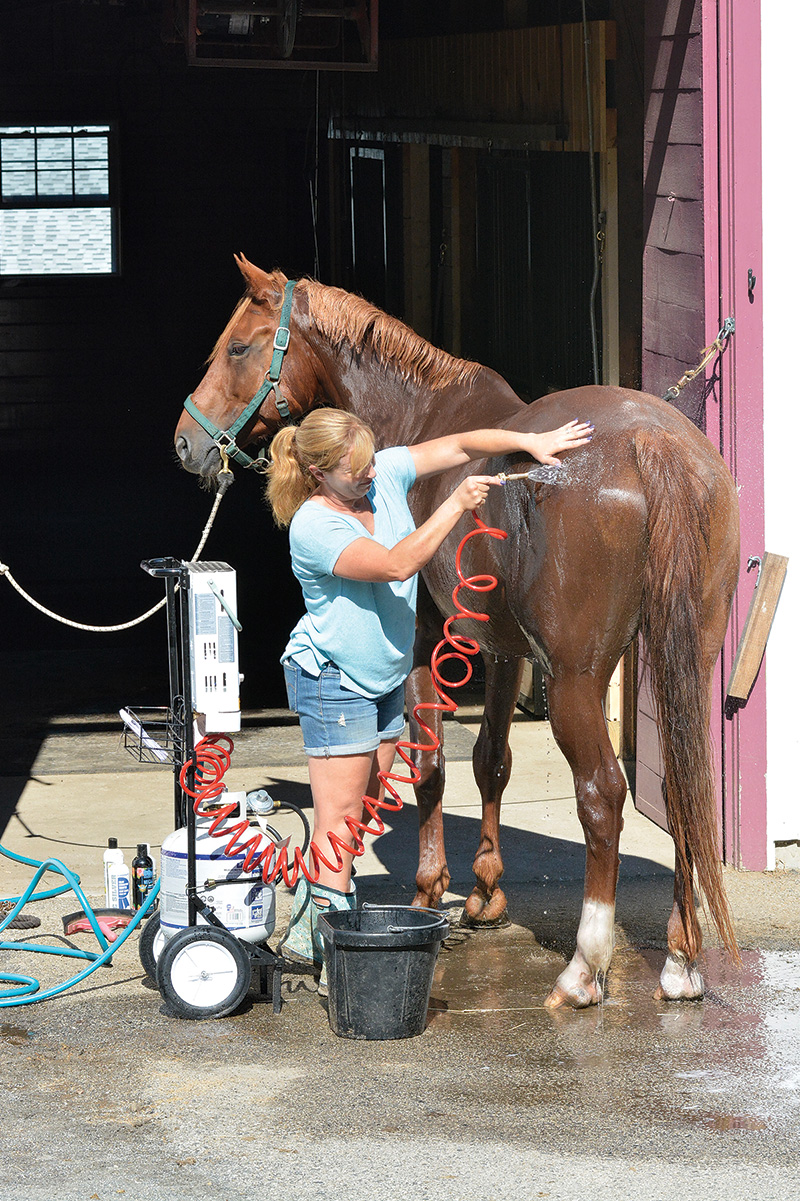
These portable systems can easily save you money over a permanent fixture (which runs at least $600-$1,000) if you’re not using it every day.
7. Clean Up Your Act
Washers and dryers at the barn are luxury items, but it sure is nice to not have to drag hairy blankets and sopping-wet towels into the house or off to the laundromat.
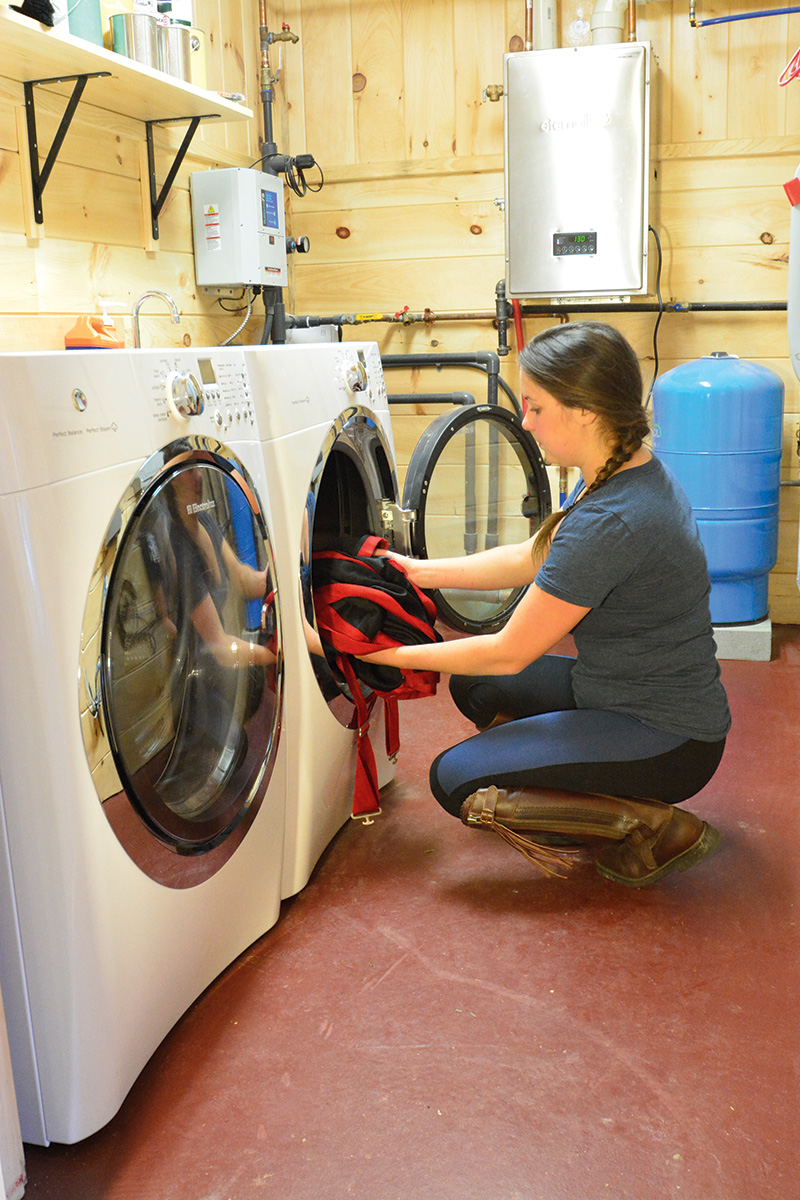
Thankfully, you don’t have to buy new, expensive machines to wash smelly blankets. My appliance repairman advised me to shop for used washers circa early 2000s; he said they last forever and repairs are inexpensive. Perfect for dealing with saddle pads and blankets! Check online classifieds like Craigslist and Facebook Marketplace for used washers and dryers near you.
8. Take Note
For less than $10, you can turn any wall in your barn into a chalkboard. With some chalkboard paint and a few strokes of a paintbrush, you can create a fun board for writing notes, phone numbers and feeding schedules.
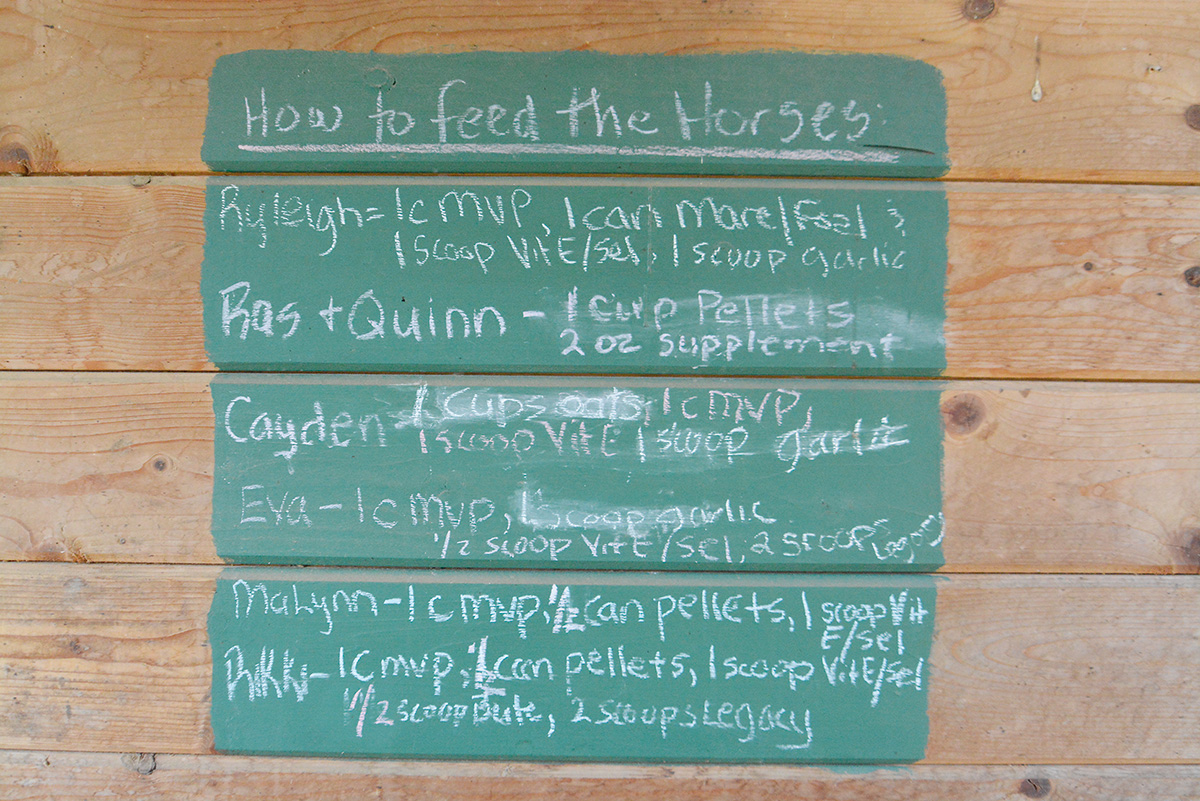
Compared to the cost and hassle of buying and mounting a dry-erase white board with markers that can dry up or permanently stick to the board, this old-school system won’t let you down.
9. Simplify Cross-tying
Get your cross-ties out of the aisles and put them in your stalls. Many barns now have cross-tie hardware in the stalls, or they designate the wash stall as a grooming area.
By eliminating cross-ties in the main barn aisle, there is less debris that needs to be continually swept up, and you’ll have more room for others to navigate around the barn when bringing horses in or out. You also don’t have horses in the way when doing routine barn chores like mucking or feeding.
10. Reinventing the Wheelbarrow
When it comes to wheelbarrows, the design hasn’t changed in the past 100 years. You have your basic choices of a single- or dual-wheeled (I prefer the single because it turns corners easier), and plastic versus metal tray.
Until recently, you could only find basic wood stump handles that seem to be designed for ridiculously large hands. Finally, someone realized actual handles would go a long way toward making the wheelbarrow better. Even when fully loaded, this type doesn’t feel like a runaway train when going downhill because I can keep a firm grip on the handles.
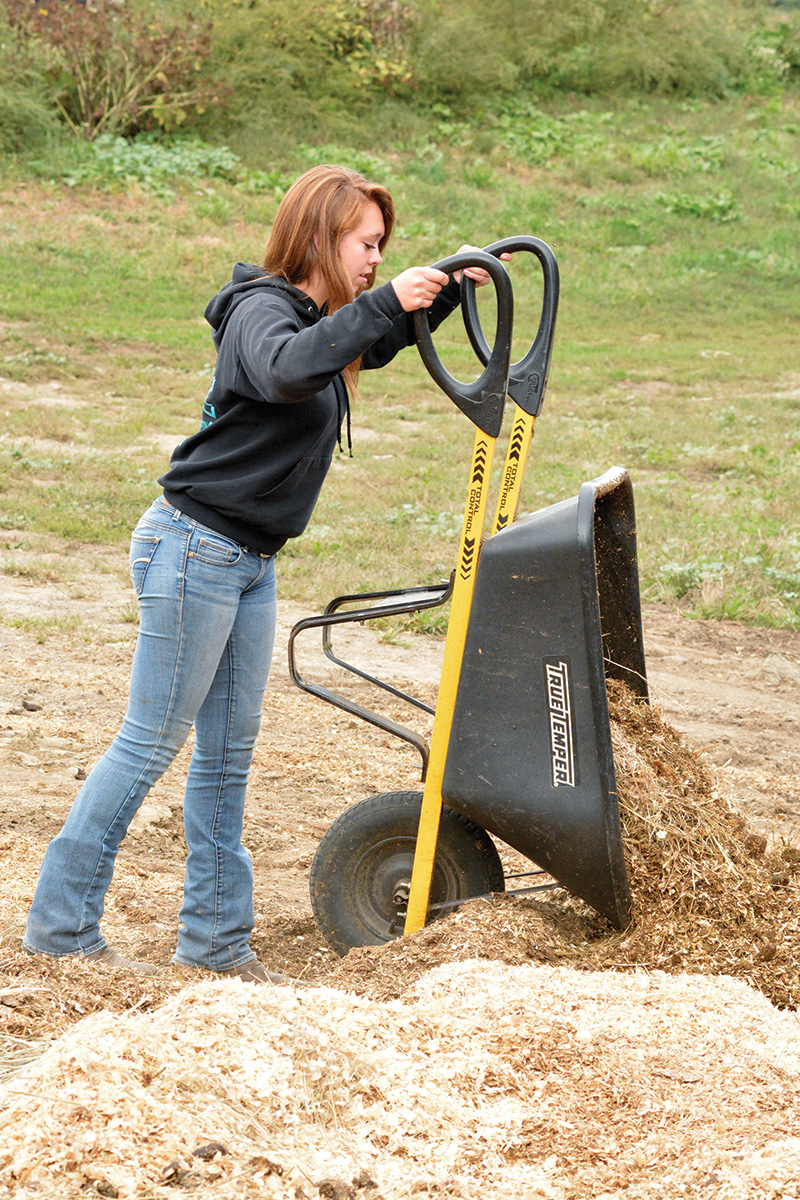
11. Bright Ideas
If you’re guilty of leaving on lights after you’ve left the bathroom, tack room or feed room, install motion sensors and watch your electricity bill go down. This, combined with energy-efficient LED lights, is a money and aggravation saver. Exterior lighting on motion sensors also saves money. You may hear that motion sensors are unreliable, but if they are set up correctly, they work great. I’ve used them on my farm for more than 25 years.
No power in an outbuilding? A battery- or solar-operated motion-sensor LED light is the answer. The one in my hay barn has been operating on the same set of batteries for seven years.
12. Shelve It
Roll those grain bins out of the way. Shop for used kitchen cabinets with slide-out bases, or just add a countertop and mount your grain bins on barrel dollies, then roll them under the counter. You’ll wonder what you did without this additional work and storage space until now.
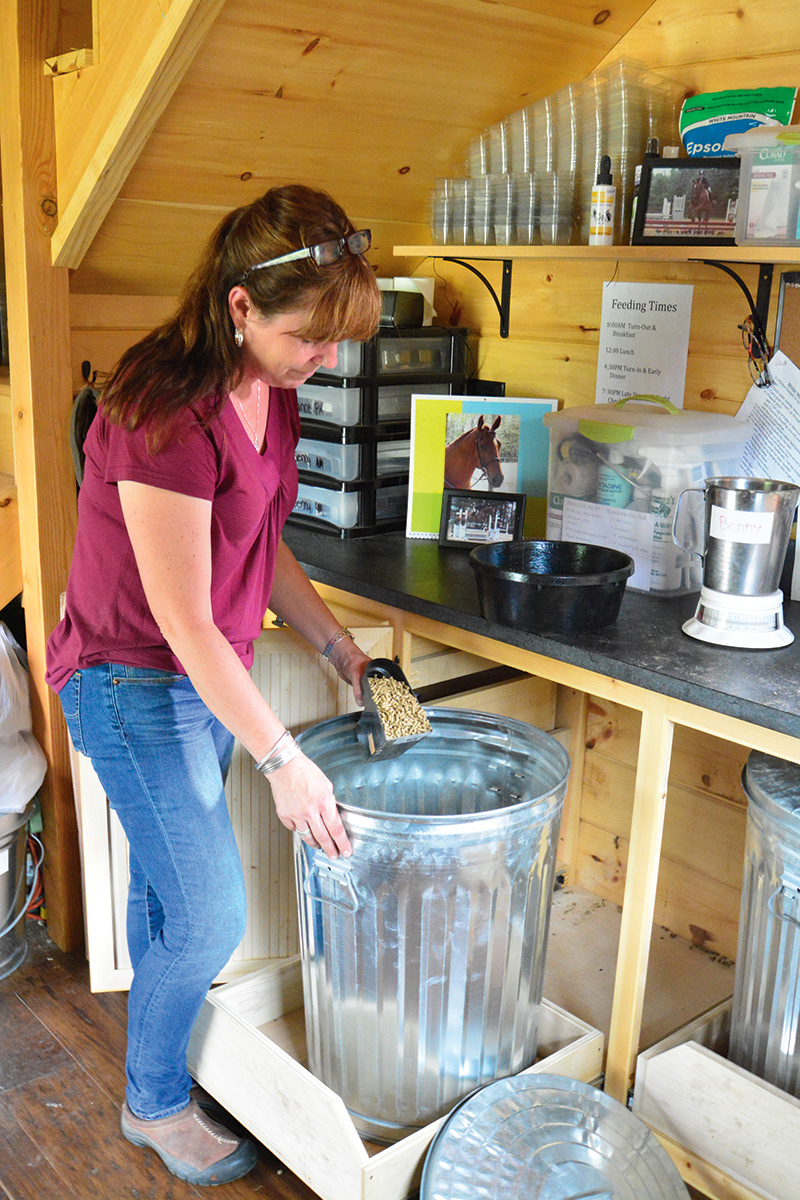
Metal trash cans are 100 percent rodent-proof, and being able to move them around allows you to keep the floors swept clean.
13. Open-Door Policy
Another old-school idea is to put solid board rails in doorways when barn doors are open. Fit the boards into slots so they can be dropped down easily for people, yet keep a loose horse from leaving the barn.
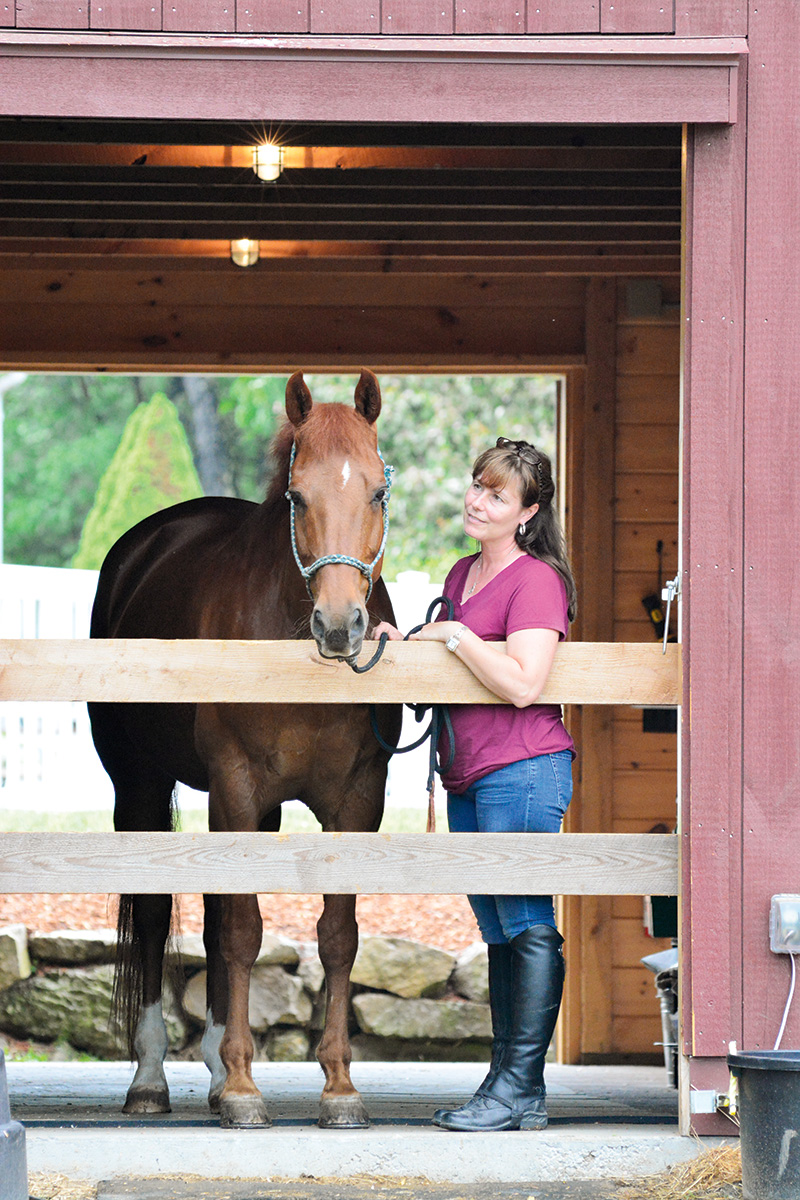
Good ventilation is key to your horses’ health, and these board rails will allow you to leave the doors open, even if you own an escape artist.
14. Save on Salt
Instead of buying small salt bricks or spools, buy a 50-pound block and place it in a corner of the stall. It will keep your horse happy and provide a source of salt for more than a year.
On a pound-per-pound basis, you will save $40 or more a year. As a side benefit, many horses that chew up the smaller bricks will just lick the larger block.
15. Nothing But Net
For years, I fed hay outside on the ground, but when horses had their fill, they wasted the remaining hay and trampled it into the dirt. (With today’s inflation-induced hay prices, this could easily add up to hundreds of dollars wasted per year.) Hanging hay nets reduces hay waste, but wrestling the hay into the nets each day is time consuming.
At a dressage farm that I visited, I noticed they had hay-net hoops. This was the best of both worlds—no more hay waste and no hassle putting the hay in the net.
Become an idea shopper! Hundreds of ideas like this abound at stables that you visit. Keep your eyes peeled and look for them. By sharing ideas and looking at the ways that other equestrians are doing things, we can all benefit—especially amid inflation.
Also Read: Beat Inflation at Horse Shows
This article about hacks for equestrians amid inflation appeared in the January/February 2023 issue of Horse Illustrated magazine. Click here to subscribe!




